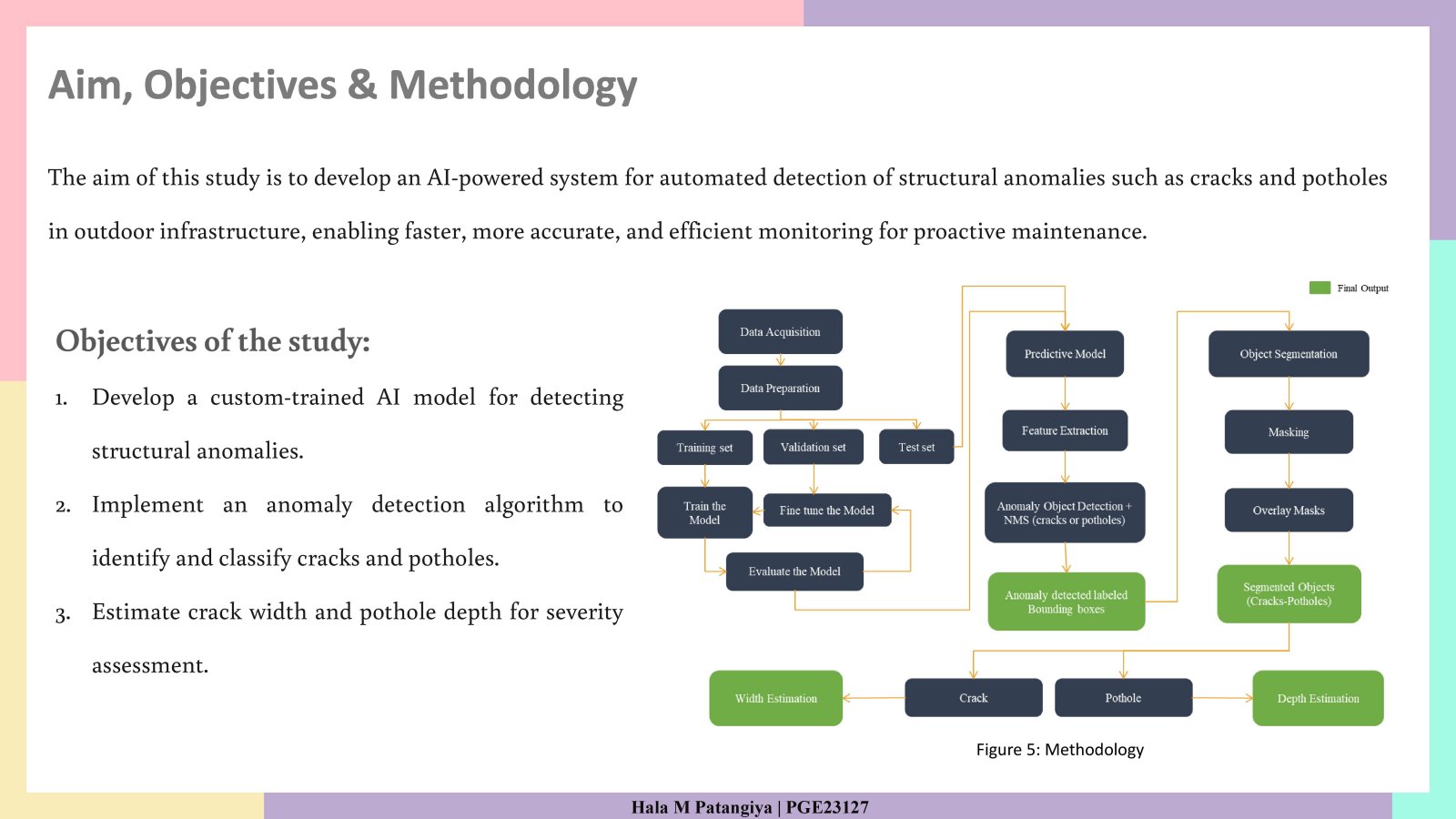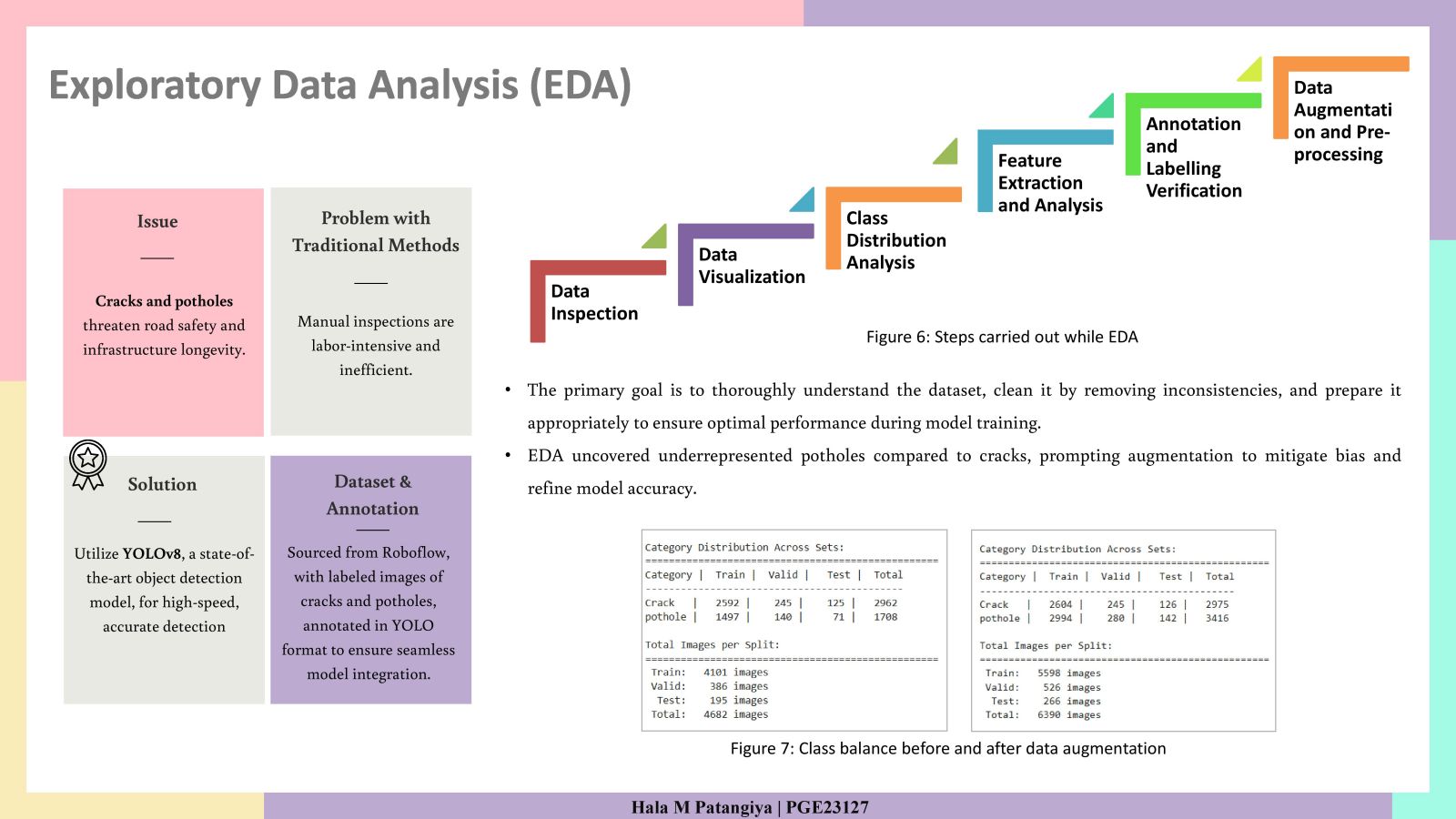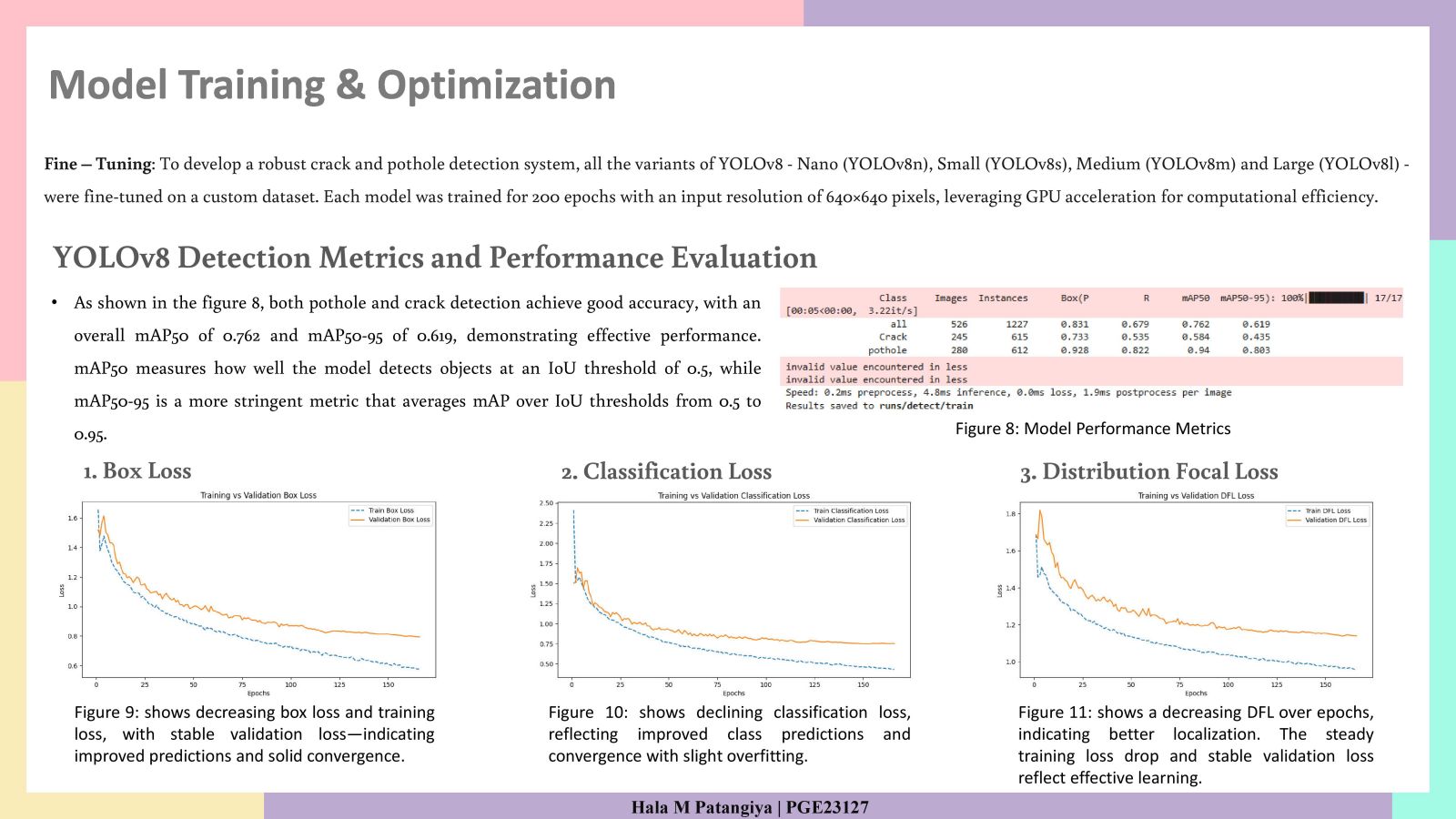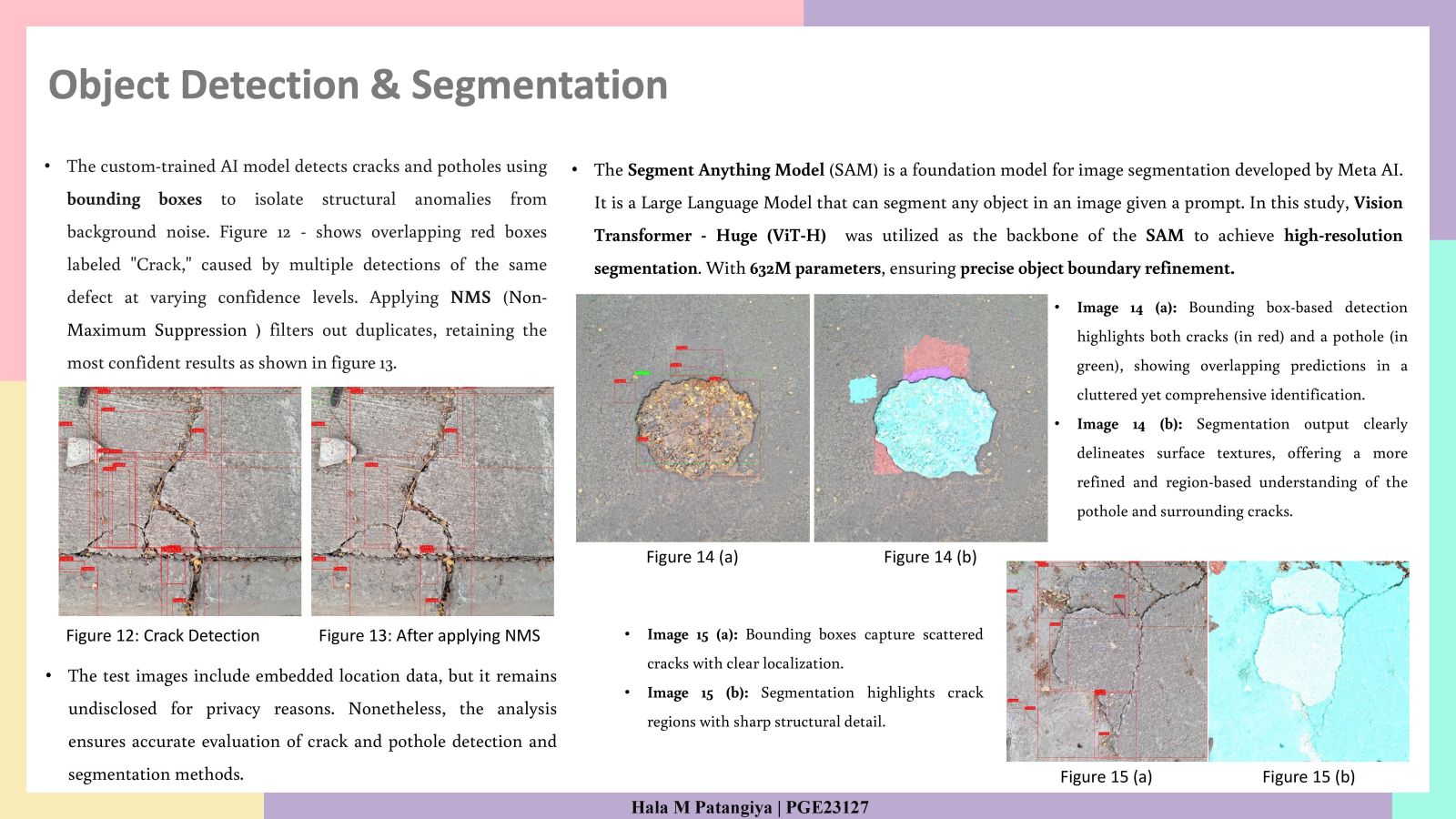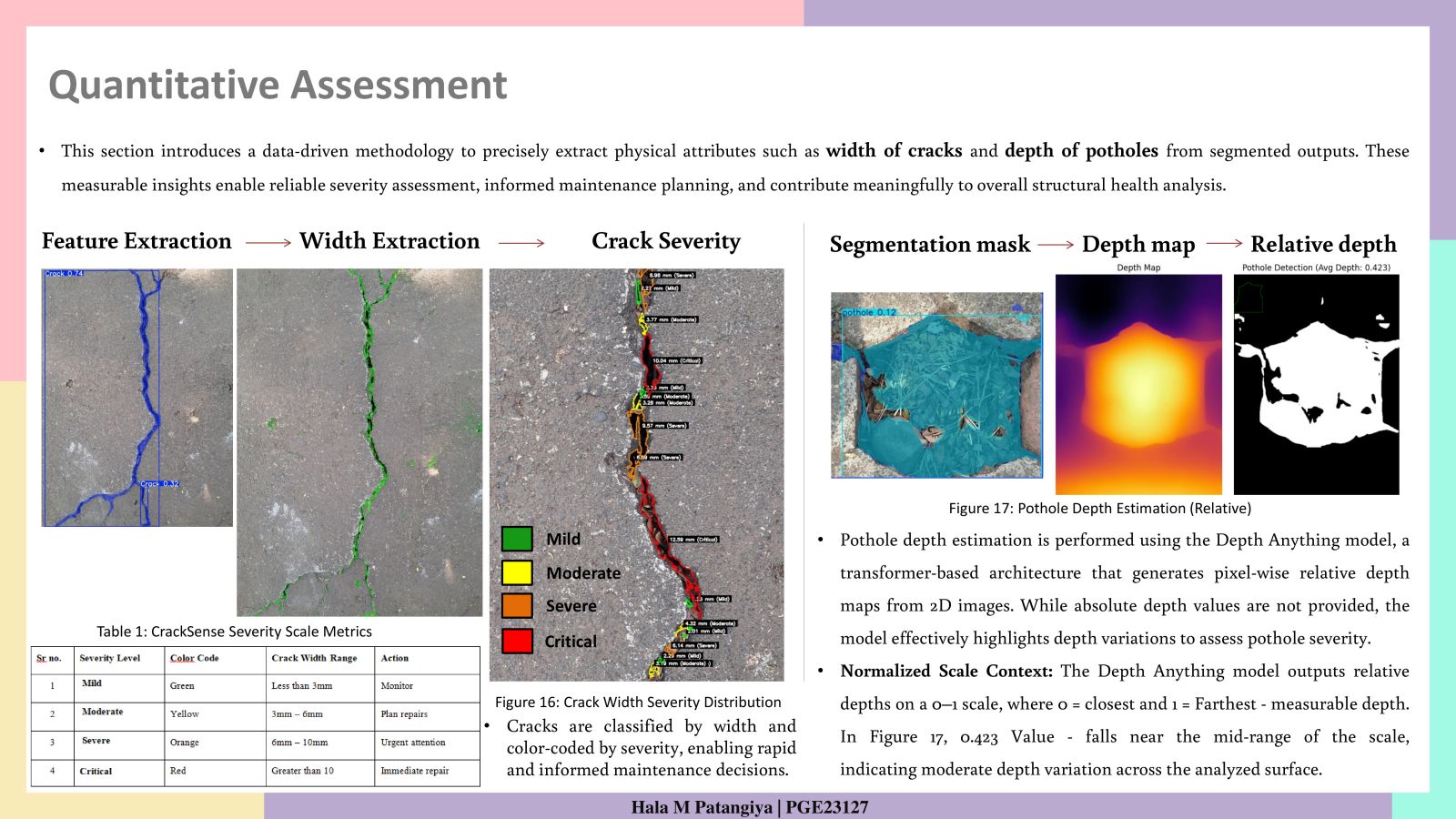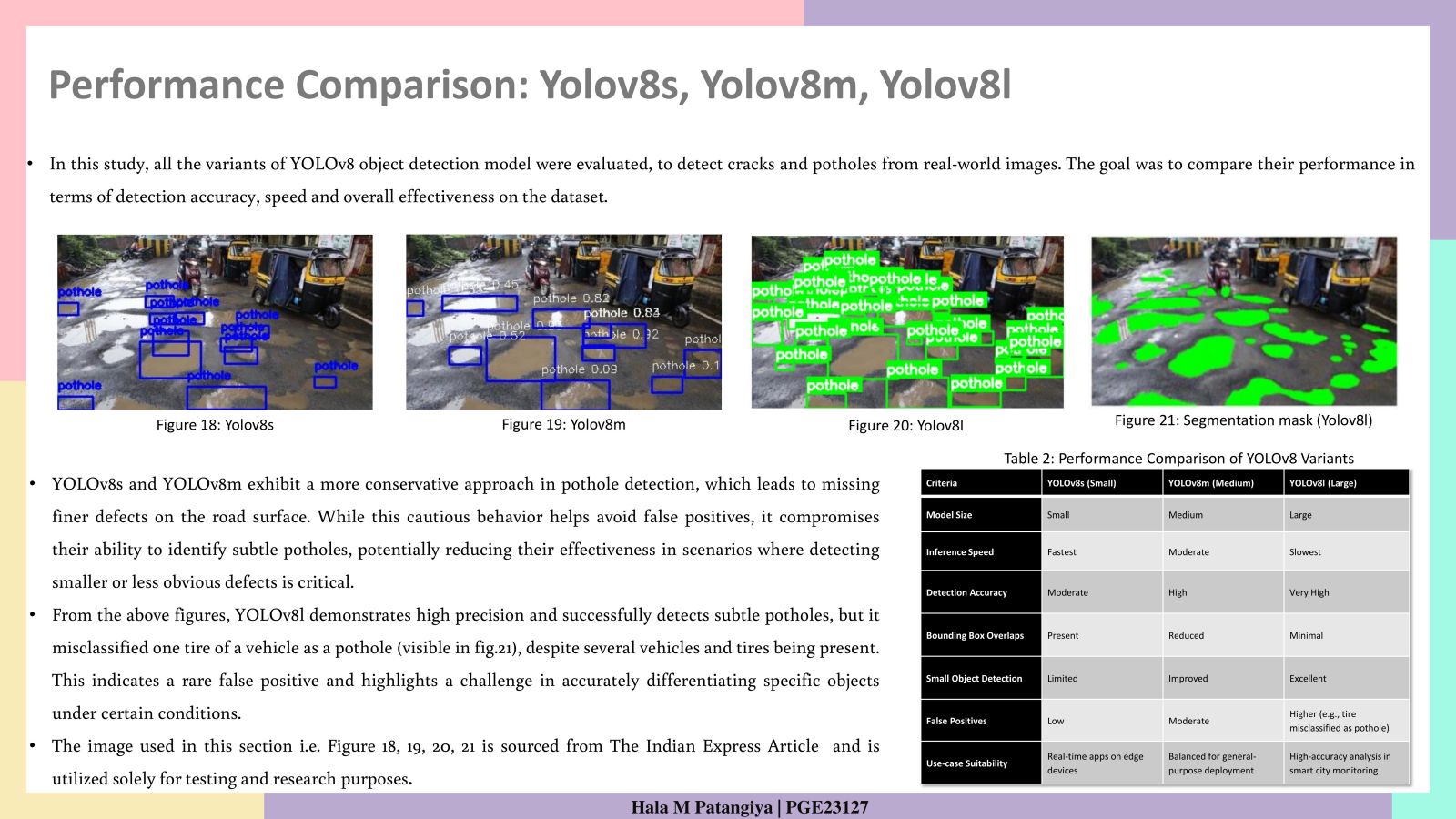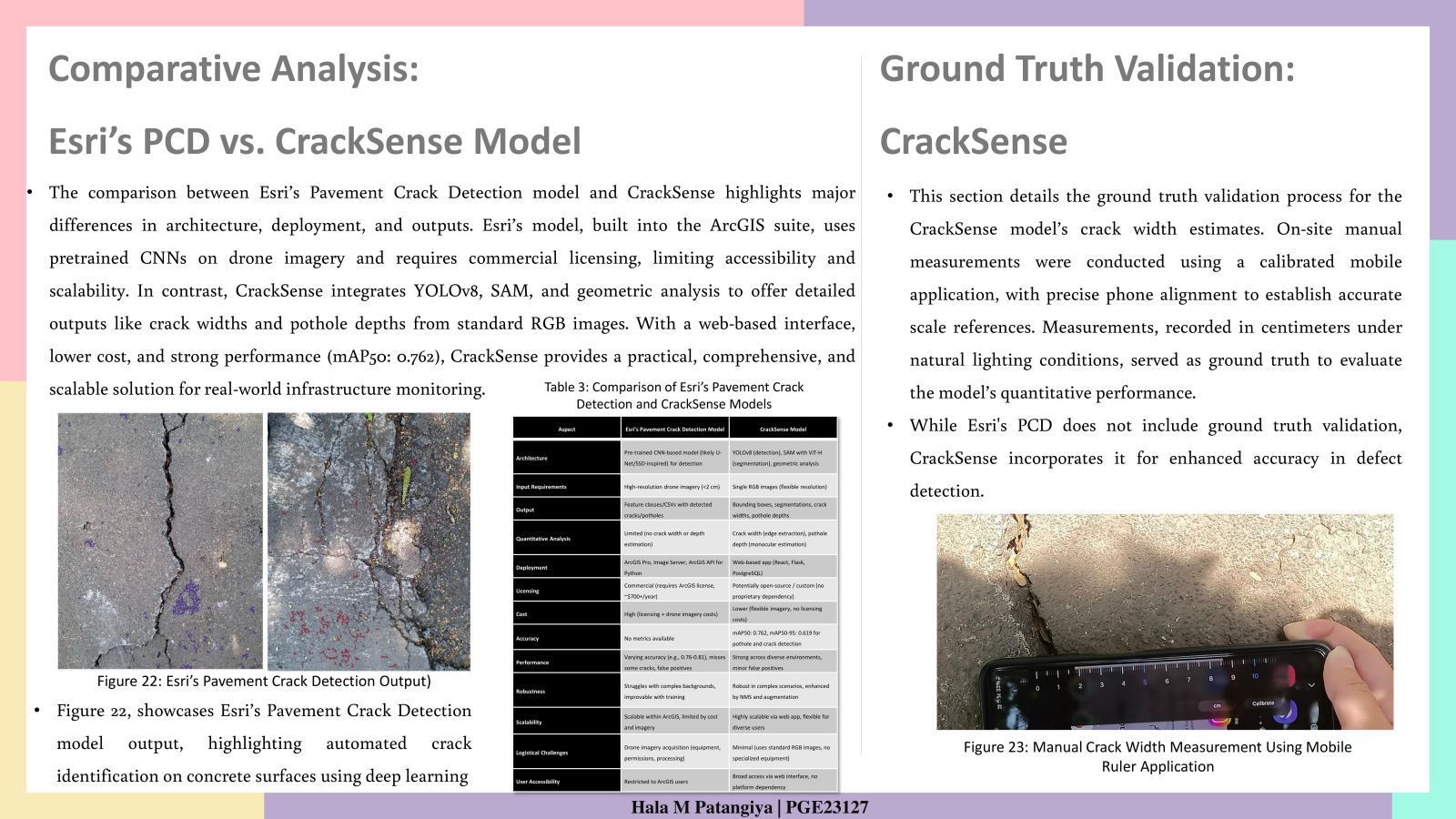Your browser is out-of-date!
For a richer surfing experience on our website, please update your browser. Update my browser now!
For a richer surfing experience on our website, please update your browser. Update my browser now!
Structural anomalies such as cracks and potholes pose significant risks to infrastructure durability and public safety, demanding intelligent and automated inspection solutions. This study presents a comprehensive deep learning pipeline that integrates object detection, segmentation, and geometric analysis for accurate and efficient structural defect assessment. A custom-trained YOLOv8 model, enhanced through data augmentation techniques, is employed to detect and localize cracks and potholes via optimized bounding box predictions. High-resolution segmentation is achieved using the Segment Anything Model (SAM) with a Vision Transformer (ViT-H) backbone, enabling precise boundary delineation. To refine outputs and eliminate redundancy, Non-Maximum Suppression (NMS) is applied, retaining only the most confident detections. Beyond visual identification, the system incorporates quantitative analysis by estimating crack widths through spatial edge extraction techniques and infers pothole depths using monocular depth estimation from single RGB images. The model supports decision-making by providing actionable insights for infrastructure management. The pipeline demonstrates strong performance across diverse environments, maintaining accuracy and reliability even in visually complex scenarios. To support real-world deployment, a web-based application is also developed using React, Flask and PostgreSQL, offering a user-friendly interface for uploading images, visualizing results, and managing geospatial data. This end-to-end framework enables real-time, scalable, and data-driven infrastructure monitoring, contributing to proactive maintenance strategies and smarter urban asset management.

